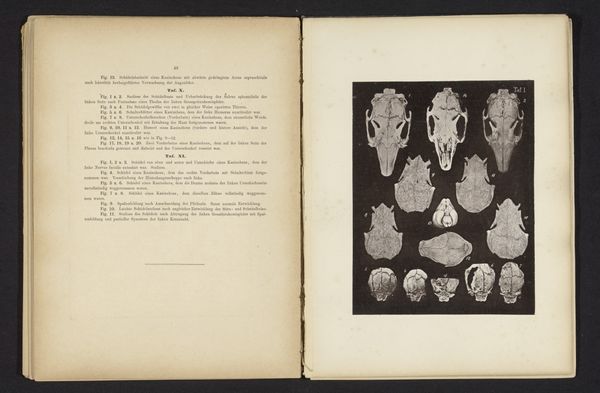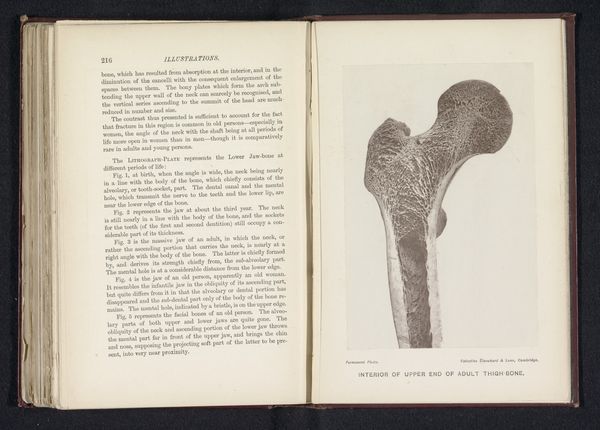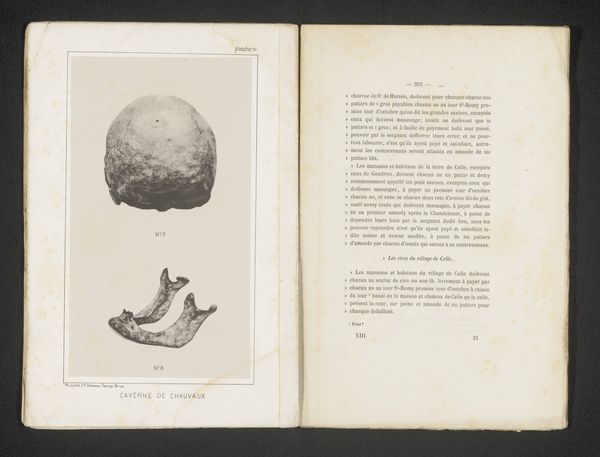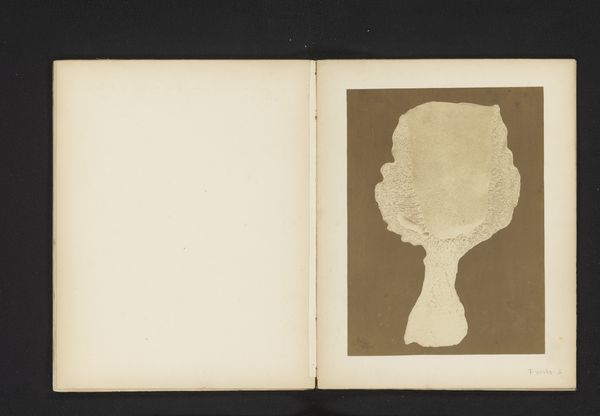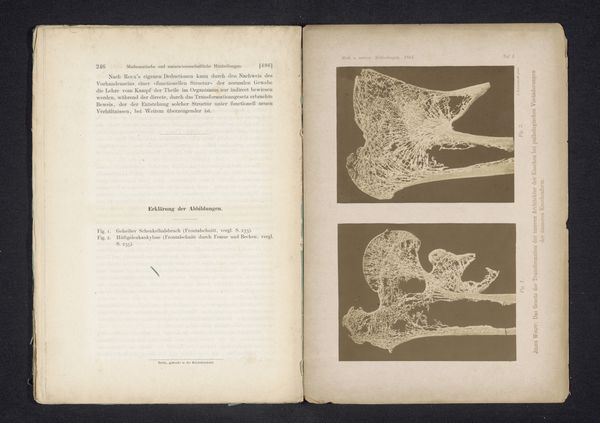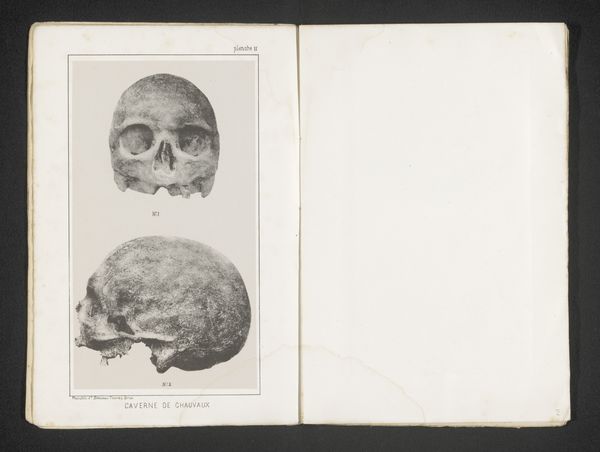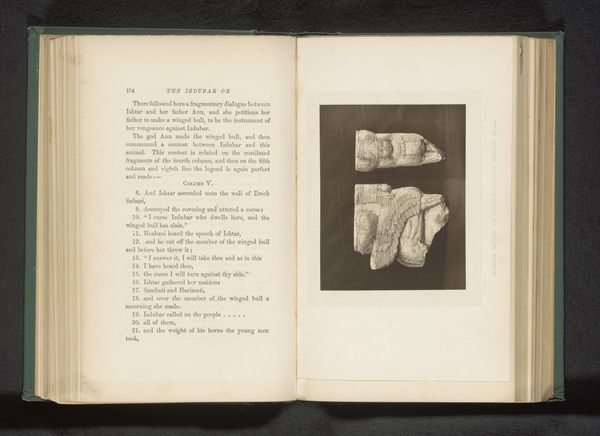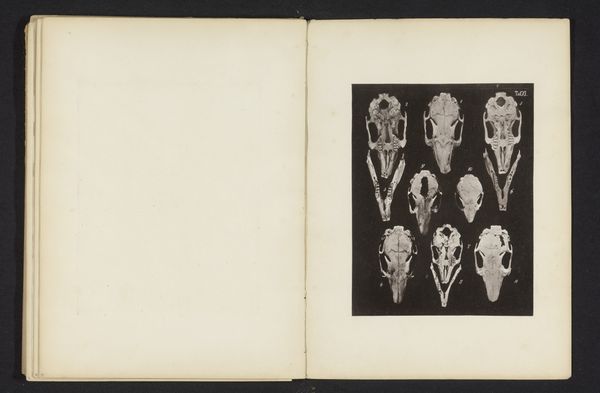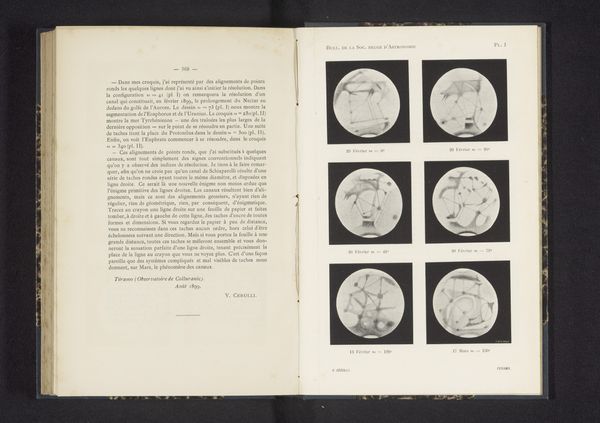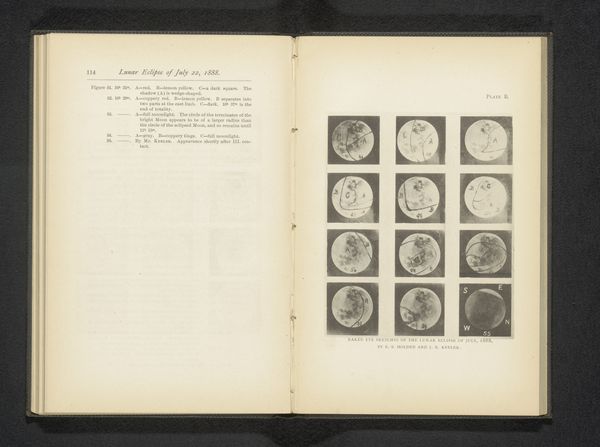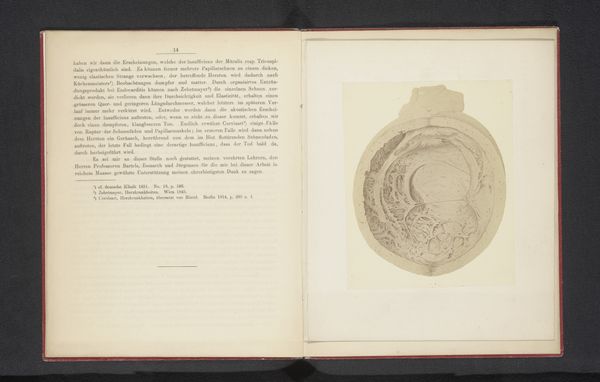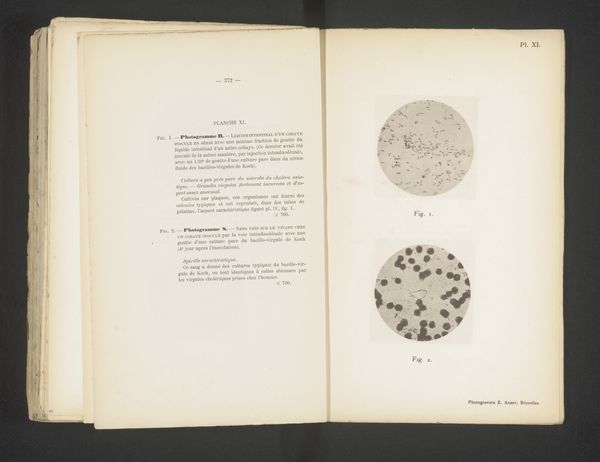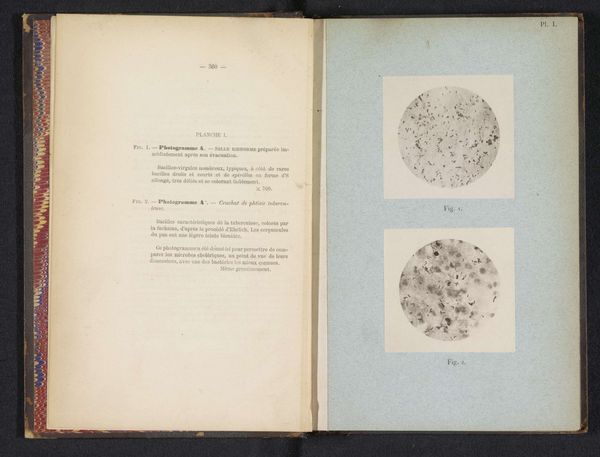
print, photography
#
still-life-photography
# print
#
photography
#
academic-art
Dimensions: height 243 mm, width 179 mm
Copyright: Rijks Museum: Open Domain
Curator: What strikes me immediately about this photograph, "Spons," taken before 1870 by Willem Cornelis van Dijk, is its ghostly quality. It seems suspended, almost like a lunar landscape rendered in miniature. Editor: Interesting. I'm drawn to the way Van Dijk utilizes photography, traditionally associated with documentation, to present what is essentially a still life. We have this sponge, presented with an almost scientific level of detail. How does the act of photographing, processing, and printing shape our understanding of this natural object as a constructed image, or even an artwork? Curator: I think the albumen print medium adds a layer. The texture is softened, lending itself to that ethereal feel I mentioned. Given the era, this isn’t just pointing a camera and shooting. There’s a laboured, almost alchemical process at play here. You are controlling light and chemicals on paper; what kind of social structures enabled such artistic license to come about? Editor: Right. Think about the distribution networks required. This wouldn't exist outside of a structured art world and market. Academic art of the era was supported by institutions; who collected images of sponges, and why? Is it about scientific study, aesthetics, a wider colonial interest in the natural world? Curator: Good point. Consider the materiality of the sponge itself, harvested, processed, then represented through light and chemistry. The transition is significant—a direct engagement with natural resource undergirds this delicate image. Editor: Absolutely, it moves beyond mere presentation. Photography like this plays a role in how people began to see and categorize the natural world in this era. There's also the aspect of creating reproducible knowledge through imagery. Curator: It does challenge how we approach our relationship to artmaking and knowledge gathering, even today. Editor: Ultimately, it highlights that what we might perceive as a neutral observation carries layers of intention and history. Curator: A photograph of a sponge is far more complicated than it first appears.
Comments
No comments
Be the first to comment and join the conversation on the ultimate creative platform.
